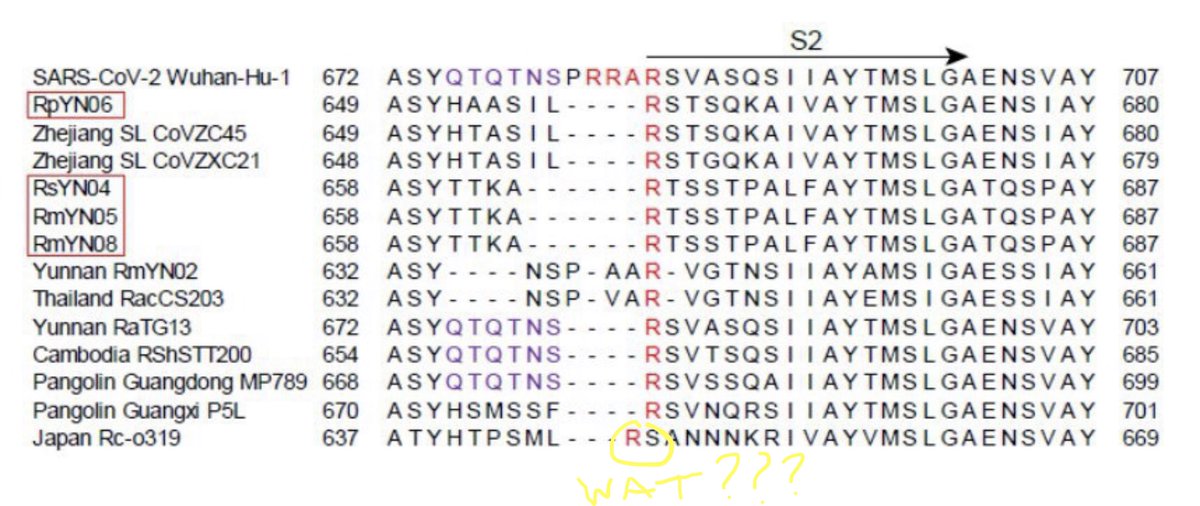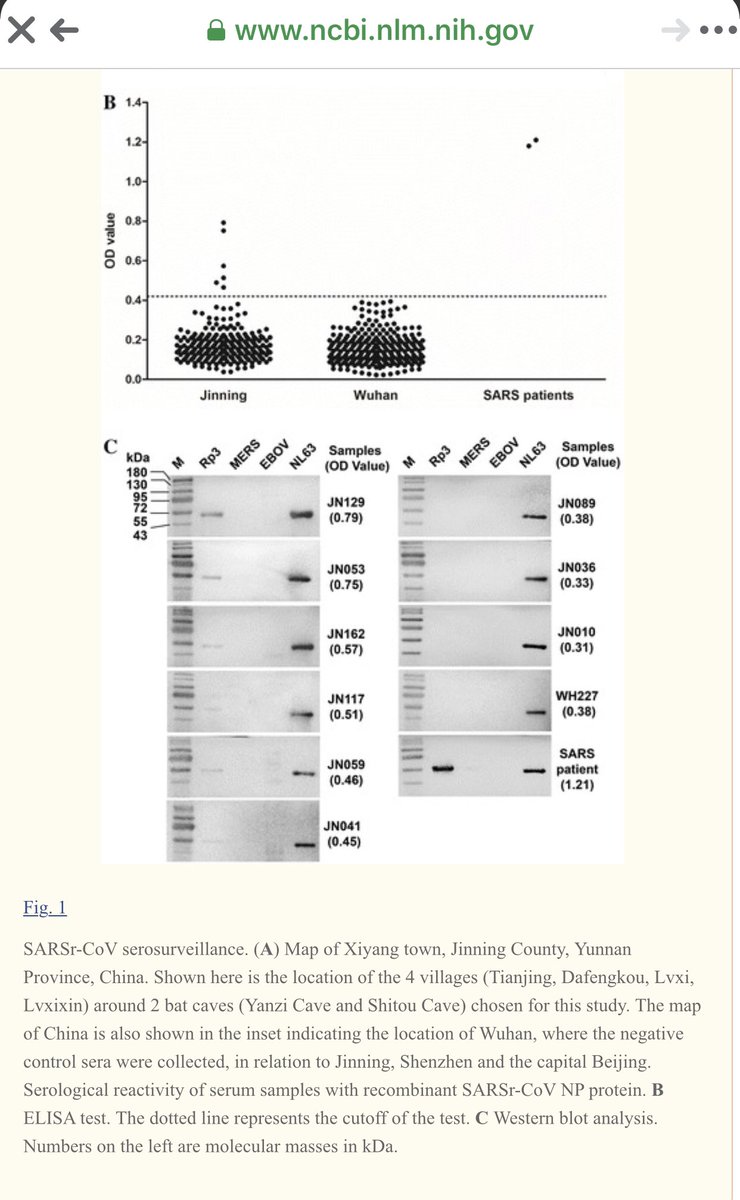
1/6 All right, today I got conclusive proof that Eddie Holmes sucks at aligning genomes. And if that’s not enough, I found the last nail in his “PAA insertion” coffin.
But first things first: he is a coauthor of a recent preprint with the following gem of an alignment (yellow):

But first things first: he is a coauthor of a recent preprint with the following gem of an alignment (yellow):


2/6
See him putting the R in Rc-o319 alignment one aa ahead of others? That should immediately trigger a WTF moment in anyone even modestly familiar with genome alignments. Next, that urge should translate into checking the underlying nucleotides, which will quickly
See him putting the R in Rc-o319 alignment one aa ahead of others? That should immediately trigger a WTF moment in anyone even modestly familiar with genome alignments. Next, that urge should translate into checking the underlying nucleotides, which will quickly
3/6
confirm that the RSAN shouldn’t be shifted in Rc-o319 compared to its relatives but should neatly align with RSVN just above it, because it is the N in Rc-o319 that got duplicated (duplicate codons AAC AAC are a dead giveaway) — see my alignment above.
Embarrassing!!! 😂
confirm that the RSAN shouldn’t be shifted in Rc-o319 compared to its relatives but should neatly align with RSVN just above it, because it is the N in Rc-o319 that got duplicated (duplicate codons AAC AAC are a dead giveaway) — see my alignment above.
Embarrassing!!! 😂
4/6
Now, regarding that final nail in the PAA insertion coffin. Today, casually browsing through GISAID as I usually do on Friday nights, I ran into a new hot bat virus I haven’t met before: PrC31 from Yunnan.
And after checking out its alignment to my favorite RmYN02,
Now, regarding that final nail in the PAA insertion coffin. Today, casually browsing through GISAID as I usually do on Friday nights, I ran into a new hot bat virus I haven’t met before: PrC31 from Yunnan.
And after checking out its alignment to my favorite RmYN02,
5/6
I couldn’t contain my excitement: the new kid on the block very nicely anchors the PAA in RmYN02 and PVA in RacCSxxx to its PIL fragment, which, in turn, aligns to SIL in ZC45/ZXC21 and others.
Translated to English, this means PAA is not a freaking insertion, Eddie!
I couldn’t contain my excitement: the new kid on the block very nicely anchors the PAA in RmYN02 and PVA in RacCSxxx to its PIL fragment, which, in turn, aligns to SIL in ZC45/ZXC21 and others.
Translated to English, this means PAA is not a freaking insertion, Eddie!
6/6
Could someone please screenshot this for Eddie, as he had me blocked the first time I told him his PAA alignment was wrong 😂😂😂
PS: here’s his recent preprint I referred to:
biorxiv.org/content/10.110…
Could someone please screenshot this for Eddie, as he had me blocked the first time I told him his PAA alignment was wrong 😂😂😂
PS: here’s his recent preprint I referred to:
biorxiv.org/content/10.110…
• • •
Missing some Tweet in this thread? You can try to
force a refresh






